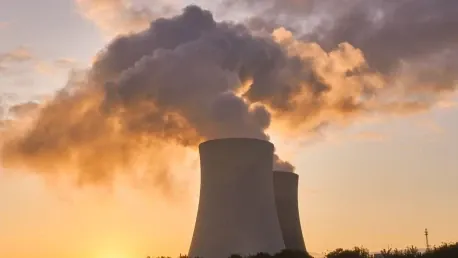Hanwha Energy Corp. is embarking on a significant initiative to transform its coal-powered combined heat and power (CHP) plant in Gunsan, South Korea, to biomass. This initiative aims to reduce carbon emissions and cater to the growing demand for eco-friendly energy solutions. Hanwha Energy recently secured approval from South Korea’s Ministry of Trade, Industry, and Energy to proceed with the conversion. The plan entails modifying 55% of the plant’s 222-megawatt (MW) capacity, particularly replacing the coal used to power the steam turbines generating 123 MW.
The Shift to Biomass
Leveraging Biomass Fuels
Hanwha Energy will transition to using biomass fuels such as wood pellets, wood chips derived from logging by-products, and dried fuels from sewage sludge. These materials, all biological in origin and sourced from plants and microorganisms, offer a more sustainable alternative to coal. The plant currently relies on a circulating fluidized bed combustion (CFBC) boiler to produce steam and gas, which power turbines for electricity and steam generation. The CFBC boiler, primarily fueled by coal, will be revamped to accommodate these new biomass fuels.
Implementing these changes requires considerable investment and infrastructure development. Hanwha Energy plans to invest approximately 100 billion won ($75 million) to modify the existing boiler and develop necessary facilities for fuel transportation and storage. These improvements are crucial for ensuring a smooth transition to biomass power production while maintaining the plant’s operational efficiency. The investment reflects Hanwha Energy’s commitment to sustainability and its proactive approach to environmental stewardship.
Timeline and Goals
The conversion process is set on a timeline to ensure thorough planning and execution. Hanwha Energy aims to kickstart biomass power production by the fourth quarter of 2026. This timeline allows for the meticulous execution of boiler modifications, infrastructure development, and compliance with regulatory standards. As the plant transitions to biomass, it will significantly cut its carbon footprint, aligning with both regional and global efforts to decarbonize energy production.
The shift to biomass isn’t just a standalone action but part of a broader industry trend towards reducing reliance on fossil fuels. By introducing biomass as a primary fuel source, Hanwha Energy is not only reducing carbon emissions but also paving the way for future advancements in green energy solutions. The strategic shift underscores a growing industry consensus on the critical importance of carbon reduction and sustainable energy practices.
Industry Implications
A Broader Industry Trend
Hanwha Energy’s transition to biomass reflects a wider trend within the power and energy industry. Globally, there is an increasing emphasis on adopting sustainable practices and turning to renewable resources to diminish the environmental impact of energy production. This industry-wide shift signifies a move toward more eco-friendly solutions that can meet the rising demand for electricity without exacerbating the carbon crisis. Hanwha Energy’s strategy to convert its plant aligns with the global mission to achieve net-zero emissions and sustainable growth.
Biomass, as a renewable energy source, holds substantial potential for wider adoption across the industry. It offers a viable method to repurpose biological waste materials, reducing the burden on landfills and providing an alternative to fossil fuels. The technology and processes developed through this project can serve as a model for other companies looking to make similar transitions. Hanwha Energy’s resolve not only aligns with environmental goals but also fosters innovation and development in renewable energy technologies.
Commitment to Sustainable Growth
By making this change, Hanwha Energy not only positions itself at the forefront of sustainable energy developments but also contributes to South Korea’s broader objectives for reducing its carbon footprint and fostering greener industrial practices. This conversion underscores a pivotal move toward achieving a more sustainable and eco-conscious energy sector.









